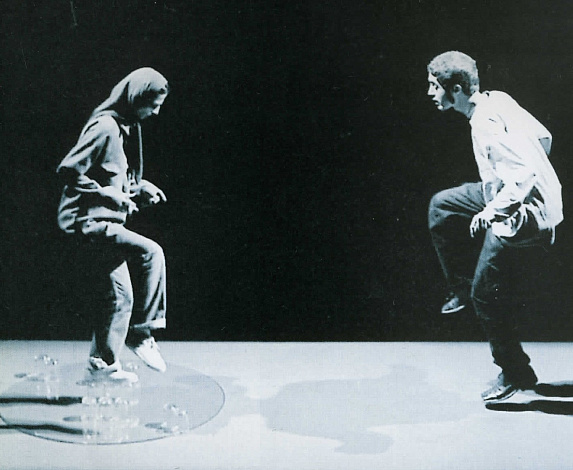Amir Reza Kuhestani was born in 1978 in Shiraz. He began his creative activity when he was 16 years oid, having published short stories in local Shiraz newspapers. In 1995 he took a great interest in cinema and enrolled on the courses for directors and cameramen. Since 1996 he has worked as actor in the «Mehr Theatre Group», but after a year he left the actor's profession. In 1997 he became a playwright-director. He is the author of plays and productions: ‘Height1, ‘And the Day Has not Come', 'Muttering Histories', ‘Dancing on Glasses’. He is the winner of Iranian theatre prizes.
«Dancing on Glasses» is one of the most successful performances in Iran lately. This production has been invited to a number of international theatre festivals. For the first time the performance was shown abroad in June 2002 at the festival «Theater der Welt» in Germany, where it was a success both with the spectators and the critics.
This production has a surprising critical clearness and creative independence. This dance is nothing else than a very gentle conversation between a young man and a young woman. They are separated not by the six meter table between them, but by the antagonism of freedom and violence, life and education, dance and ritual. If we replace the name ‘shiva’ then it is not difficult to read between the lines (which the Iranian public is especially accustomed to), that in the name of another deity in Persia the dance of life appears in the fetters of an empty ritual. The relations between the Iranian youth and the caste of their tutors leads to a fatal outcome. This is the idea of the production, whose peculiarity lies in the fact that it does not speak about that directly. The time in which love develops in the performance is painful. The time of a 'dancing on glasses'
Sueddeutsche Zeitung
This production has a surprising critical clearness and creative independence. This dance is nothing else than a very gentle conversation between a young man and a young woman. They are separated not by the six meter table between them, but by the antagonism of freedom and violence, life and education, dance and ritual. If we replace the name ‘shiva’ then it is not difficult to read between the lines (which the Iranian public is especially accustomed to), that in the name of another deity in Persia the dance of life appears in the fetters of an empty ritual. The relations between the Iranian youth and the caste of their tutors leads to a fatal outcome. This is the idea of the production, whose peculiarity lies in the fact that it does not speak about that directly. The time in which love develops in the performance is painful. The time of a 'dancing on glasses'
Sueddeutsche Zeitung

